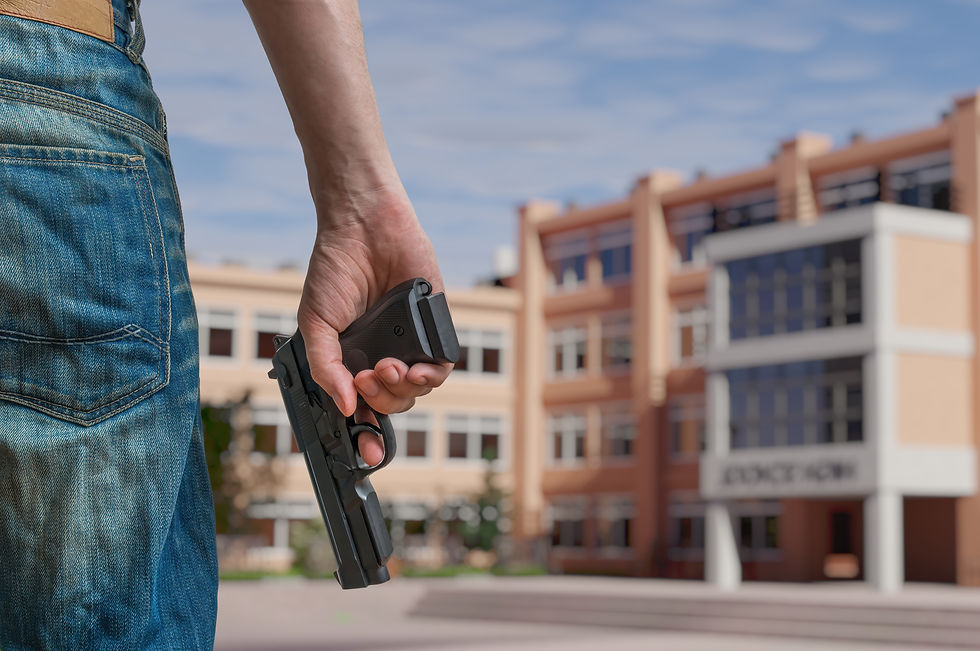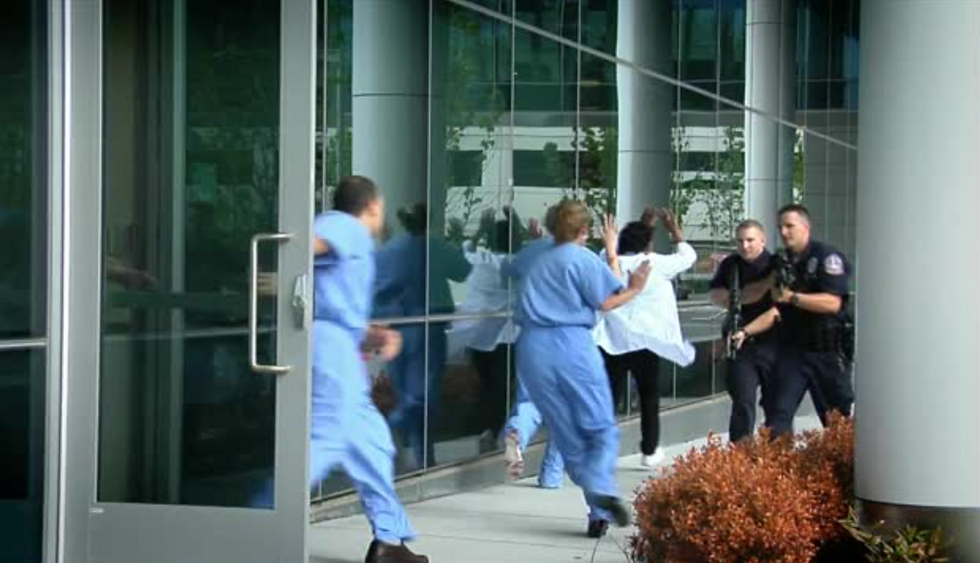Preparing for the Unthinkable: The Importance of Active Shooter Training for Workplace Safety
- gene423
- Sep 15
- 6 min read

Preparing for the Unthinkable: The Importance of Active Shooter Training for Workplace Safety
In today's world, workplace safety has become a major concern for businesses of all sizes. With the rise of active shooter incidents in recent years, it has become more important than ever for companies to take proactive measures to protect their employees.
That's where active shooter training comes in. By preparing your workforce for the unthinkable, you can help minimize the impact of a potential attack and increase the chances of survival. In this article, we'll explore the importance of active shooter training for workplace safety and why it's essential for every business to have a plan in place.
We'll take a closer look at what active shooter training entails, how it can benefit your company, and what steps you can take to get started. So, whether you're a small business owner or a corporate executive, read on to learn more about how you can prepare for the worst and keep your employees safe.
Understanding the Threat of Active Shooters in the Workplace
According to the FBI, there were 277 active shooter incidents in the United States between 2000 and 2018, resulting in 884 casualties. Active shooter incidents can happen anywhere, including workplaces, schools, and public spaces. These incidents can be unpredictable and can happen quickly, leaving little time for employees to react.
The primary goal of active shooter training is to help employees understand the threat of an active shooter and how to respond in the event of an attack. This training can help employees identify potential warning signs, such as aggressive behavior or threats, and know how to report these behaviors to the appropriate authorities.
It's important to note that active shooter incidents are not limited to any particular type of workplace or industry. They can happen anywhere, at any time. Therefore, it's critical for all businesses to take steps to prepare for the possibility of an active shooter incident.
The Importance of Active Shooter Training for Workplace Safety
One of the main reasons why active shooter training is so essential is that it can help save lives. By providing employees with the knowledge and skills they need to respond to an active shooter incident, you can increase the chances of survival for everyone in the workplace.
In addition to potentially saving lives, active shooter training can also help reduce the impact of an incident. For example, employees who have been trained on how to respond to an active shooter may be able to help others escape or provide first aid to those who have been injured.
Another benefit of active shooter training is that it can help employees feel more prepared and empowered. When employees know what to do in the event of an active shooter, they may feel less anxious and more confident in their ability to protect themselves and others. This can lead to a more positive work environment and improved employee morale.
Types of Active Shooter Training
There are several different types of active shooter training, each with its own strengths and weaknesses. Some common types of training include:
Classroom Training
Classroom training typically involves a presentation or lecture on the topic of active shooter incidents. This type of training may cover topics such as how to identify potential warning signs, what to do in the event of an active shooter, and how to respond to law enforcement. While classroom training can be a good starting point, it may not be enough on its own. Employees may not retain all of the information presented in a lecture-style format, and they may not feel fully prepared for an actual incident.
Tabletop Exercises
Tabletop exercises are simulations of an active shooter incident. During a tabletop exercise, employees are presented with a hypothetical scenario and are asked to work together to develop a response plan.
This type of training can be useful because it allows employees to practice their response in a low-stress environment. However, it may not fully prepare employees for the chaos and confusion of an actual incident.
Live-Fire Training
Live-fire training involves using simulated firearms and other tools to simulate an active shooter situation. This type of training can be very effective at helping employees develop the skills and muscle memory needed to respond quickly and effectively in an actual incident.
However, live-fire training can also be risky. It's important to work with a reputable training provider who can ensure that all safety protocols are followed and that employees are properly trained and supervised.
Preparing for an Active Shooter Situation
In addition to providing active shooter training to your employees, there are several other steps you can take to prepare for an active shooter situation. These steps include:
Conducting a Risk Assessment
A risk assessment can help you identify potential vulnerabilities in your workplace and develop a plan to address them. This assessment may involve reviewing your physical security measures, such as access controls and surveillance systems, as well as your policies and procedures for responding to an active shooter.
Developing an Emergency Response Plan
An emergency response plan is a written document that outlines the steps you will take in the event of an active shooter incident. This plan should include information on how to notify law enforcement, how to evacuate the building, and how to shelter in place if necessary.
Communicating with Employees
It's important to communicate your active shooter response plan to all employees. This can help ensure that everyone knows what to do in the event of an incident and can help reduce confusion and panic.
What to Do During an Active Shooter Situation
If an active shooter incident does occur, it's important to remember the following tips:
Run
If it's safe to do so, leave the building immediately. Encourage others to do the same, but do not waste time trying to convince others to come with you.
Hide
If you can't safely leave the building, find a secure location to hide. Lock or barricade the doors and turn off the lights. Be as quiet as possible and silence your phone.
Check out our ULTIMATE GUIDE TO BARRICADING A DOOR
Fight
If you are unable to run or hide, be prepared to fight. Use any objects you can find as weapons and try to incapacitate the shooter.
Post-Incident Response and Recovery
After an active shooter incident, it's important to provide support to employees who have been affected. This may include providing counseling services, offering time off to those who need it, and helping employees navigate the process of filing workers' compensation claims.
It's also important to conduct a thorough review of your response plan and identify any areas for improvement. This review should involve input from all stakeholders, including employees, law enforcement, and any other relevant parties.
Best Practices for Implementing Active Shooter Training in the Workplace
When implementing active shooter training in the workplace, there are several best practices you should follow:
Start with the Basics
Begin by providing employees with a basic understanding of the threat of active shooters and how to respond in the event of an incident. This may involve a short presentation or training session.
Customize Training to Your Workplace
Every workplace is unique, so it's important to tailor your training to your specific environment. Consider factors such as the layout of your building, the number of employees, and any potential security vulnerabilities.
Provide Ongoing Training
Active shooter training is not a one-time event. It's important to provide ongoing training and refresher courses to ensure that employees are prepared to respond in the event of an incident.
Get Buy-In from Leadership
Active shooter training is only effective if everyone is on board. Make sure that your leadership team understands the importance of this training and is willing to dedicate the necessary resources to implement it.
Legal and Ethical Considerations
There are several legal and ethical considerations to keep in mind when implementing active shooter training in the workplace. These include:
Compliance with OSHA Regulations
The Occupational Safety and Health Administration (OSHA) requires that employers provide a safe workplace for their employees. This includes taking steps to prevent workplace violence, such as providing active shooter training.
Privacy Concerns
It's important to balance the need for workplace safety with employees' privacy rights. For example, if you conduct a risk assessment, you must ensure that any personal information you gather is kept confidential.
Liability
If an active shooter incident does occur in the workplace, there is the potential for legal liability. It's important to work with legal counsel to ensure that your response plan is legally sound and that you are taking all necessary steps to protect your employees.
Conclusion
In conclusion, active shooter training is an essential component of workplace safety. By preparing your employees for the possibility of an active shooter incident, you can help minimize the impact of an attack and increase the chances of survival. Whether you opt for classroom training, tabletop exercises, or live-fire training, it's important to tailor your training to your specific workplace and provide ongoing education and support. By taking these steps, you can help ensure that your employees are prepared for the worst and that your workplace remains safe and secure.







Comments